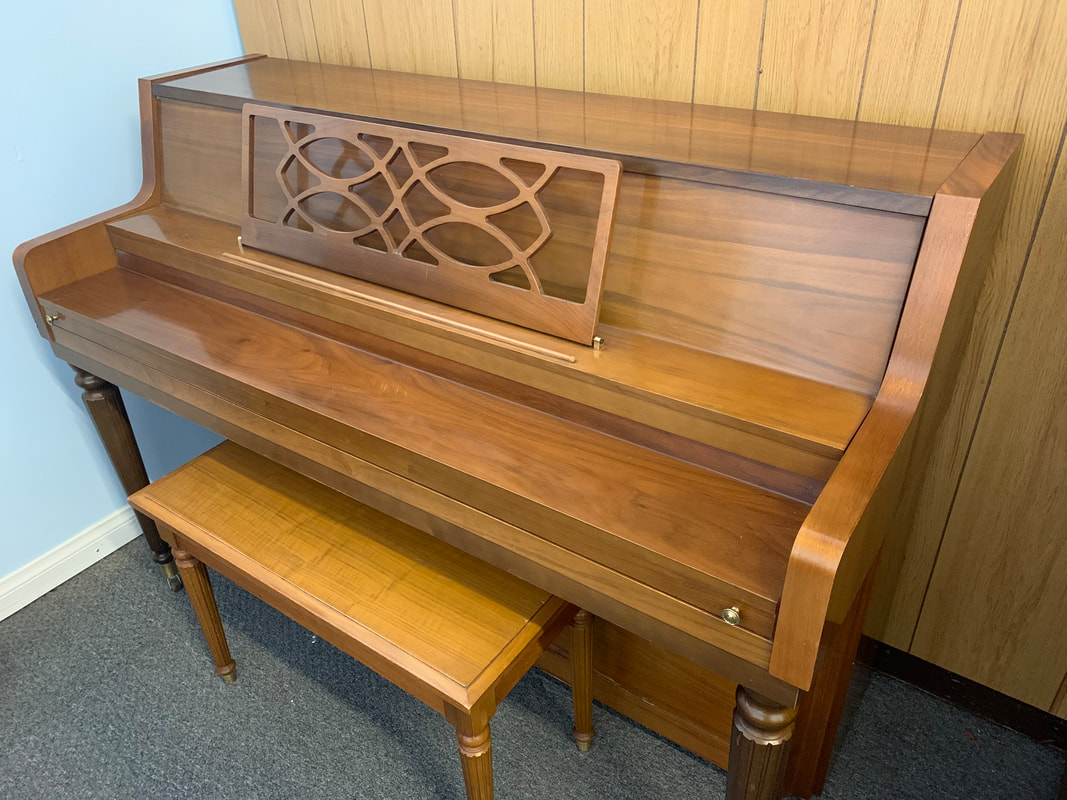

Piano strings are wrapped around tuning pins, which are turned to adjust the tension of the strings. For a vibrating string, the frequency is determined by the string's length, mass, and tension. The pitch of a note is determined by the frequency of vibrations. Because pianos typically have multiple strings for each piano key, these strings must be tuned to the same frequency to eliminate beats. Likewise, if a string tuned to 220 Hz (with a harmonic at 440 Hz) is played together with a string tuned at 442 Hz, the same 2 Hz beat is heard. For example, if a piano string tuned to 440 Hz (vibrations per second) is played together with a piano string tuned to 442 Hz, the resulting tone beats at a frequency of 2 Hz, due to the constructive and destructive interference between the two sound waves. This fluctuation in the sound intensity is a result of two (or more) tones of similar frequencies being played together. Īn out-of-tune piano can often be identified by the characteristic " honky tonk" or beating sound it produces. For these reasons, many piano manufacturers recommend that new pianos be tuned four times during the first year and twice a year thereafter. Frequent and hard playing can also cause a piano to go out of tune. In newer pianos the strings gradually stretch and wooden parts compress, causing the piano to go flat, while in older pianos the tuning pins (that hold the strings in tune) can become loose and not hold the piano in tune as well. Changes in temperature can also affect the overall pitch of a piano. For instance, changes in humidity will affect the pitch of a piano high humidity causes the sound board to swell, stretching the strings and causing the pitch to go sharp, while low humidity has the opposite effect. Many factors cause pianos to go out of tune, particularly atmospheric changes. Constructive and destructive interference results in a beating pattern in the resulting wave. The two waves are initially identical, then the frequency of the green wave is gradually increased by 25%. The sum (blue) of two waves (red, green) is shown as one of the waves increases in frequency. Many piano manufacturers recommend that pianos be tuned twice a year.Īn illustration of beating.
#Professional piano tuner ventura professional
Professional training and certification is available from organizations or guilds, such as the Piano Technicians Guild. Piano tuning is done by a wide range of independent piano technicians, piano rebuilders, piano-store technical personnel, and hobbyists.

#Professional piano tuner ventura software
In practice, a MIDI software can label middle C as C 3-C 5, which can cause confusion, especially for beginners. For a classical piano and musical theory, the middle C is usually labelled as C 4 (as in scientific pitch notation) However, in the MIDI standard definition this middle C (261.626 Hz) is labelled C 3. In all systems of tuning, every pitch may be derived from its relationship to a chosen fixed pitch, which is usually A440 (440 Hz), the note A above middle C. (See Piano key frequencies for the theoretical piano tuning.) Pianos are usually tuned to a modified version of the system called equal temperament. Fine piano tuning requires an assessment of the vibration interaction among notes, which is different for every piano, thus in practice requiring slightly different pitches from any theoretical standard. The meaning of the term 'in tune', in the context of piano tuning, is not simply a particular fixed set of pitches. Piano tuning is the act of adjusting the tension of the strings of an acoustic piano so that the musical intervals between strings are in tune.


 0 kommentar(er)
0 kommentar(er)
